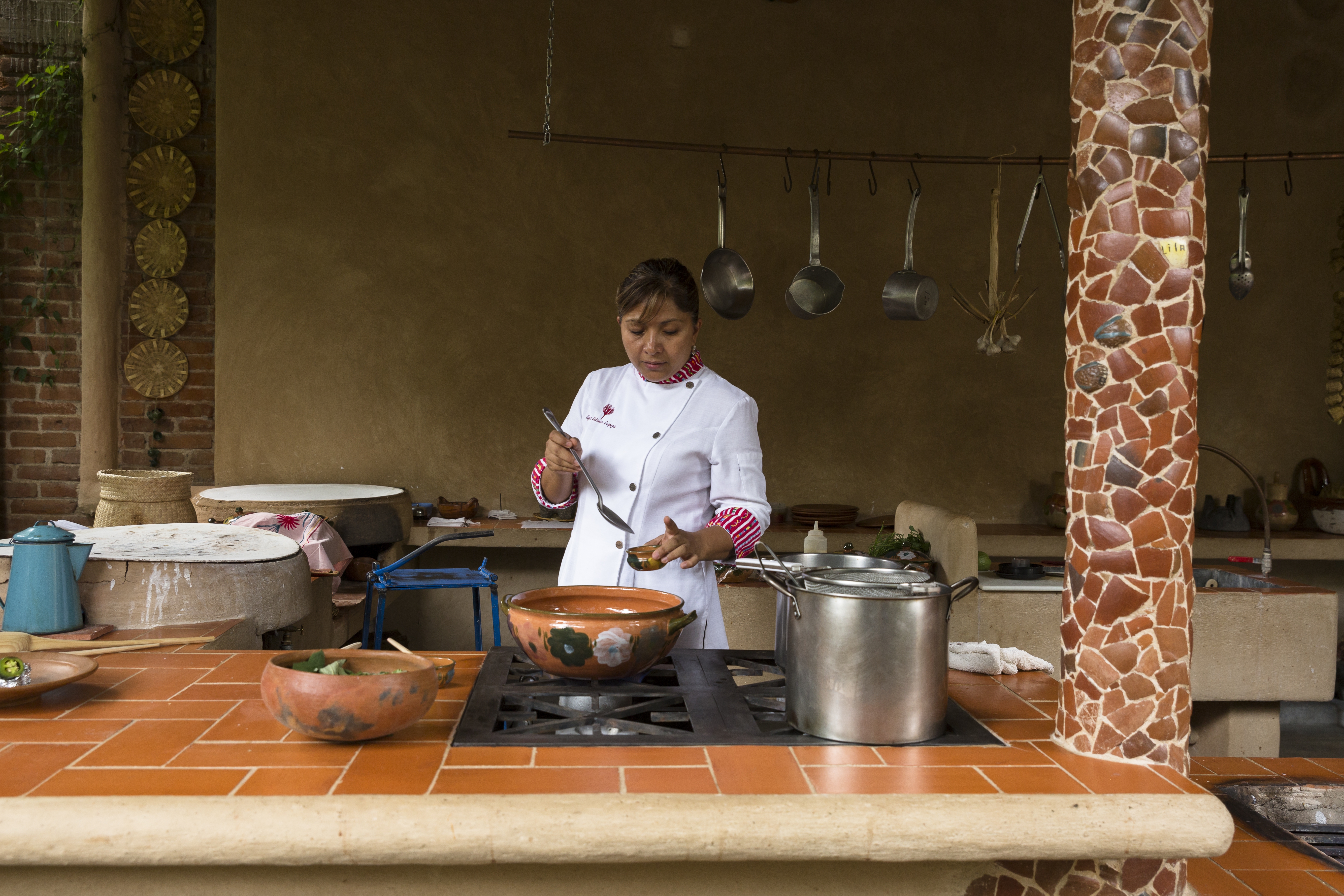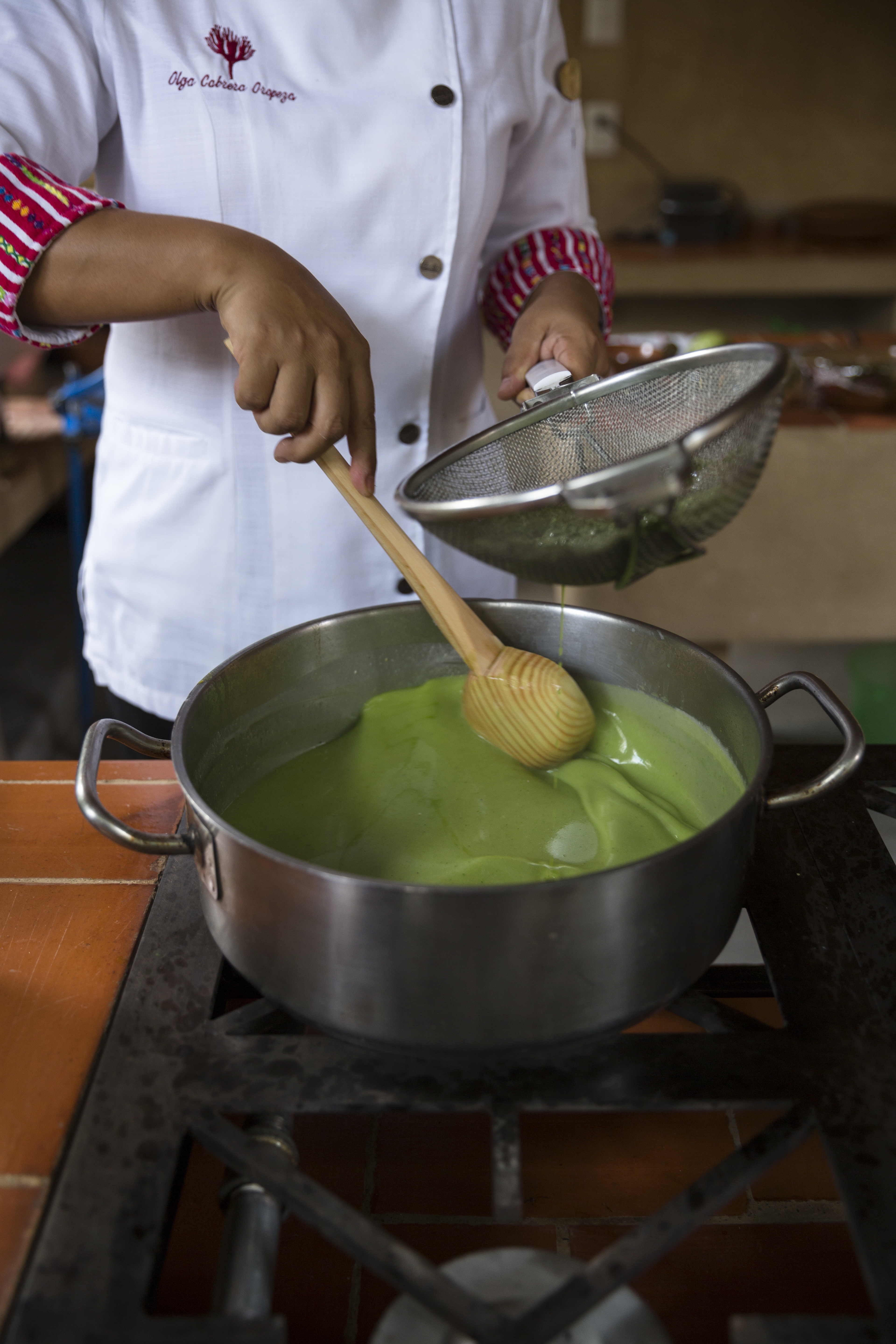Was it a sauce or was it a stew? It was mole verde, so we weren’t entirely sure. Whatever you call it, it was vibrant green and studded with poached pork and hunks of vegetables. And it was unbelievably good, velvety, salty and herbal, with just a bit of spice.
Chef Olga Cabrera Oropeza had welcomed us to the terrace kitchen of Tierra del Sol, her stately residence-turned-restaurant, to teach us about something we’d always considered a sauce. But here was another of many examples we’d found in Oaxaca that mole—from the complex, earthy mole negro variety to this simpler bright green triumph—was more than a mere accompaniment. In fact, throughout the visit we’d seen meals built entirely of hubcap-size plates of corn tortillas and ladlefuls of mole, each requiring a knife, fork and spoon.
But of all the moles (MOE-lays) we’d tasted—and across Mexico there are innumerable varieties—mole verde not only was the simplest, it also was the most unexpected, solidifying the lesson that mole is a foundation on which to build, not the other way around.
At Oropeza’s restaurant, pork bones and onions simmered in a large stockpot, while she charred serranos, jalapeños, onion, tomatillo and garlic on a comal (a clay griddle). It all went into a blender with cumin seeds and a ladleful of the pork broth, blended into a thin puree while oil heated in another pot.

Once the oil was sufficiently hot, she poured in the blended chili mixture. In Mexican cooking, this is known as frying the sauce, a technique used for salsas, moles, refried beans and more; it’s said to thicken a sauce’s texture and enrich its flavor. It bubbled and sizzled, reducing almost instantly. Oropeza swirled it around with a wooden spoon and let it cook for a few minutes more before adding broth.
She then crumbled masa—dried corn kernels soaked and cooked in limewater—into the blender with more broth, blitzed it, and added it to the pot. It thickened almost immediately, taking on a glossy sheen. At this point, the mole smelled wonderful but was far from its namesake green—the color from the peppers and tomatillo had continued to mellow as the base cooked. But now Oropeza began to gather the herbs: hoja santa (which tastes like licorice and mint), epazote (a citrusy-minty herb), cilantro and parsley. “It should be more herbal than spicy,” she said.
For a third time, Oropeza grabbed the blender, this time stuffing it with herbs. Again, she poured in broth, then pureed until the liquid inside was a deep kelly green. She strained the blend into the mole; as the two liquids combined, the mixture turned a vibrant lime. She spooned it around the pork and vegetables. And with one bite, we knew the sauce was all that mattered.

Back at Milk Street, fresh masa was out of the question. Instead, using Oropeza’s recommended substitute, we simmered corn tortillas in chicken broth, then fished them out once the broth was boiling. In a blender, they quickly reduced to a puree, which we stirred back into the broth, lending a silky consistency.
We decided to serve our mole with chicken (instead of pork) and vegetables. To deepen the flavor of all components, we cooked them in the liquid that ultimately would be our mole’s base. We staggered the addition of chicken thighs, potatoes, green beans and chopped zucchini to the broth. They cooked in just 15 minutes.
For the mole itself, we charred the garlic, tomatillos, onion and a poblano chili under the broiler. And rather than make multiple flavoring purees as Oropeza had, we streamlined and blended those ingredients all at once with copious fresh herbs and spices—cilantro, parsley, mint, cumin and fennel seeds (which mimicked the anise flavor of the hoja santa).
The final sauce was boldly herbal and perfectly smooth—just the way we had it in Oaxaca.





